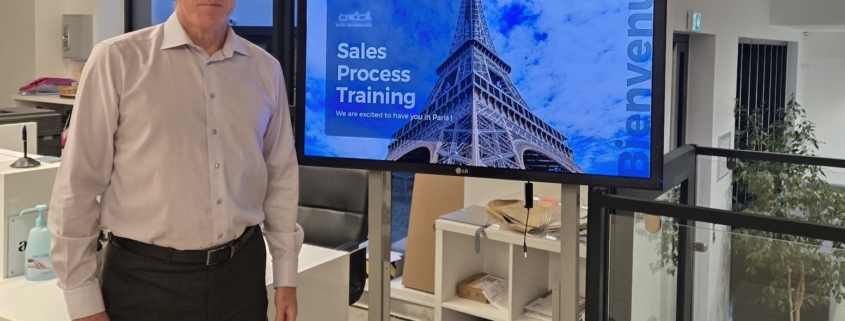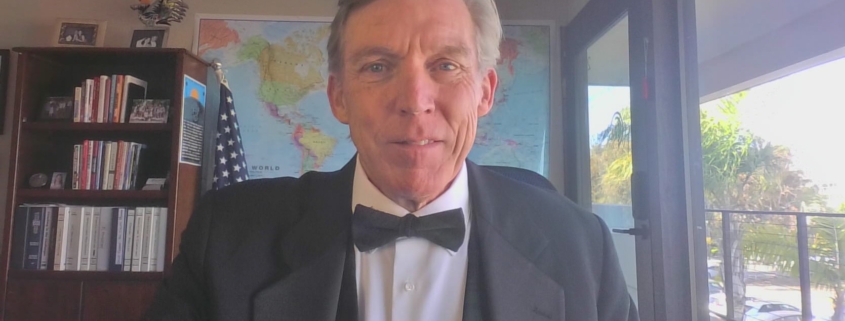We’re honored to share this fantastic testimonial from Kevin Leak who has partnered with us twice to strengthen his teams and drive revenue through our sales process training workshops.
Archive for month: May, 2025
By one definition, process is “a series of steps with input and output.” Whether you are aware of it or not, process impacts our lives from the moment we are born. My kids go through a process to get out the door to school every morning. The orange juice they drank also went through a process to get to the table. Their teachers go through the process to advance their learning over a year’s time. All these processes are designed to get a predictable outcome.
In business, a well-defined sales process can lead to year in, year out predictable revenue. Wall Street rewards public companies based on their ability to annually predict their earnings. Some miss wildly and some are spot on. How can this be achieved? Look to the sales process, the organizational engine that generates the revenue. Here are few ways that sales process can help to generate revenue more effectively:
1. Use objective criteria – once defined, a sales process provides objective criteria and the framework to make decisions. Say a sales group is underperforming. What numbers or facts are available through sales process to pinpoint the problem? From the pipeline or opportunity review standpoint, there are specific data points you can rely on for analysis. Is it in the types of clients you are calling on? Are your sellers getting stuck in prolonged evaluations that never yield a decision? Or is it in the close ratio? It may not matter where the problem is, what really matters is that you are able to look at each problem objectively with certain criteria and then correct the course.
2. Allocate human and technological resources – How much should we spend to hire and train people? Or how much should be invested in CRM or other sophisticated software tailored to my business? As you pinpoint where bottlenecks exist, the lens you look through will help to determine if people or technology is needed to help improve. On the front end of the process, many solid lead generation services exist to help identify qualified opportunities. It’s my experience that the challenges towards the end of the selling process come in the form of the skills of the seller, or ability to effectively negotiate and close.
3. Increase visibility into new areas for growth – This may be viewed as an ethereal, strategic choice based on gut feel and economic trends, but hard data is needed for this process as well. Sales process delivers the hard data on what types of customers are attracted to your product, and why they are attracted. If this data not captured in a consistent way, then the top management loses connectivity and an ability to analyze trends with proper perspective.
Agree or not, process is King. I have this discussion with sales professionals from all industries . We learn how each person implements process in their industry, what’s working and what’s not. Broaden your understanding, challenge your thinking and, hopefully, define or refine your sales process. Tonight at home, however, I’ll be taking my queues from the process Queen. When the process Queen is happy we are all happy. It’s also my home recipe for predictable success.
Flannery Sales Systems (www.drive-revenue.com) helps organizations define or refine and implement a repeatable sales process. Increasing revenue through sales process is the ultimate goal. Flannery Sales Systems works with a broad cross section of industries and we are confident we can enhance your results.
By Gerhard Gschwandtner, Founder and CEO of Selling Power Magazine
There’s a particular look that some entrepreneurs wear like a tailored suit. A mix of modest confidence and deep-seated grit. John Flannery wore that look when I sat down with him—plus an actual tuxedo, in honor of his company’s 20th anniversary.
Two decades of building a business from scratch. That’s rarefied air in the sales training world, where trends change with every algorithm tweak and buzzwords have shorter half-lives than TikTok memes. But Flannery isn’t a trend chaser. He’s a process guy. A clarity guy. The kind of leader who spotted a systemic flaw in big companies—that the larger the organization, the more cracks you’ll find in the sales process —and built a business to fix it.
“I had a good business once,” Flannery tells me, reflecting on his early ventures in wireless tech. “But the partnership didn’t work out.” That’s the sort of line that sounds easy in hindsight but stings in real-time. What followed was a stint working for someone else—a career detour that, for many entrepreneurs, feels like purgatory. But purgatory, as it turns out, is a great place to study the system. And Flannery noticed something: sales processes in big organizations were bloated, fragmented, and increasingly ineffective.
Then came a spark. A trainer he was working with introduced him to a nimble model for sales development. That moment? That was Flannery’s founding motivation. He didn’t just launch a company—he declared a war on complexity. And he armed himself with simplicity, repeatability, and, most of all, a repeatable, adaptable, highly effective process.
Early success came wrapped in grit. “I was 14 months in, still prospecting,” he recalls. Then, like a plot twist in a feel-good movie, a referral introduced him to the president of a scientific distribution company. What started as a one-year contract for 400 employees bloomed into a six-year partnership impacting over 1,100 people.
“That was the anchor tenant,” Flannery says. You can hear the gratitude in his voice. But also the strategy. He knew how to land a whale and build a processing ship around it.
Then came the pandemic—the great disrupter of handshakes in hotel sales conference rooms. Twenty-one in-person workshops, vaporized in a week. On March 12, Flannery was flying back from Philadelphia. On March 13, the country shut down. The old model—face-to-face training—was dead. Online video technology took off.
It could have been a death knell. Instead, it was a pivot. Flannery adapted quickly, transforming 15 of those 21 sessions into virtual trainings. “We had to get good behind the lights,” he says. And fast.
Now, the next tidal wave looms: artificial intelligence. While some view it as a threat to human touch, Flannery sees opportunity in its algorithmic prowess. “Coaching is where AI will lift us the most,” he tells me. His team is working with developers to embed AI into sales coaching—using machine intelligence to tee up the right questions, identify risk signals early, and accelerate pipeline movement before a human coach ever steps in.
This isn’t about replacing the human touch. It’s about preparing it.
As Flannery gears up for the third decade in his business, he’s not chasing novelty. He’s chasing effectiveness. That’s the difference. And maybe the key lesson.
In the end, John Flannery isn’t just building a better sales process. He’s building something more enduring: trust through structure, clarity through chaos, and momentum through meaningful work.
If you’re wondering what it takes to last 20 years in sales training, don’t just study his methods. Study his mindset.


